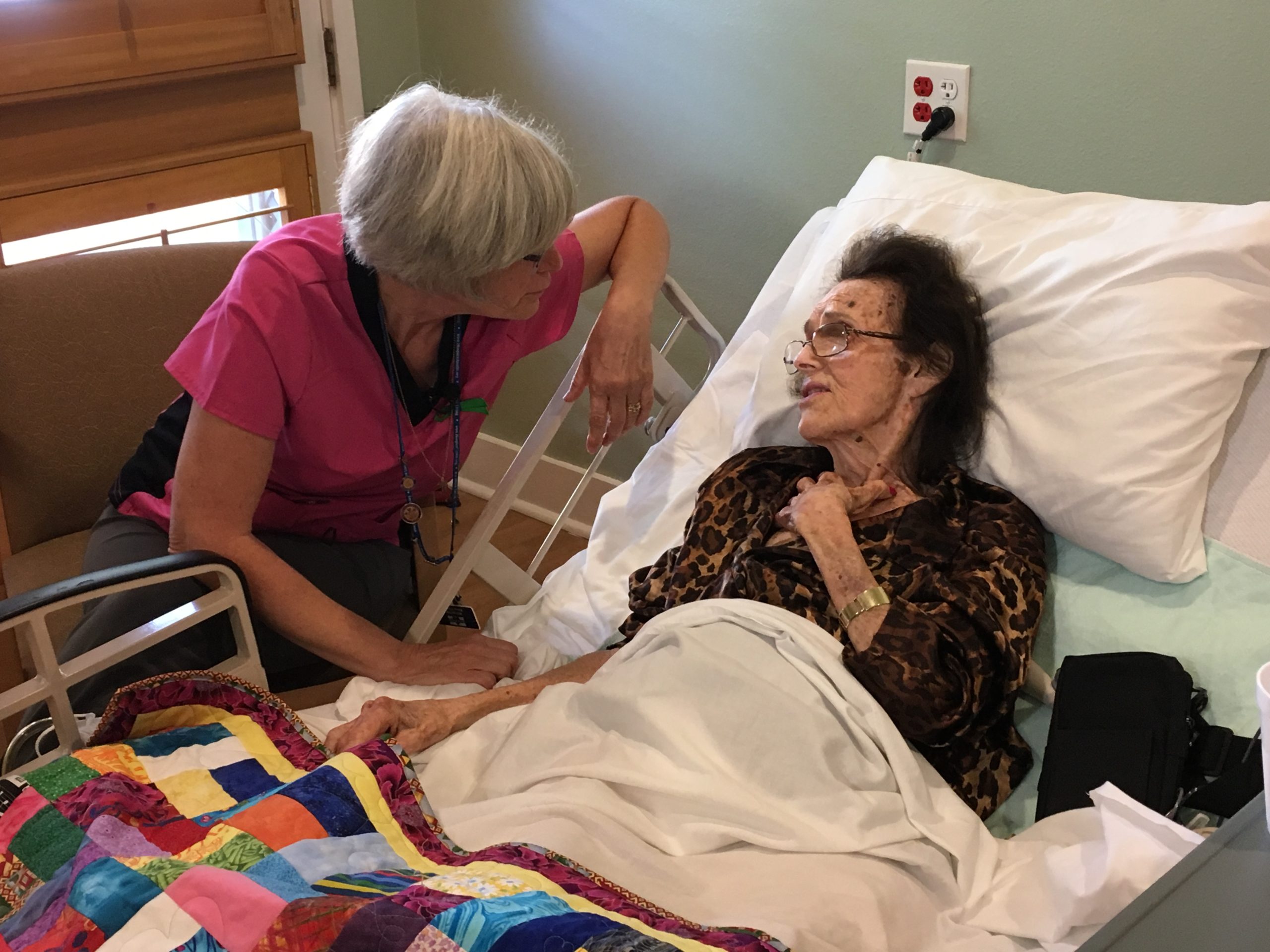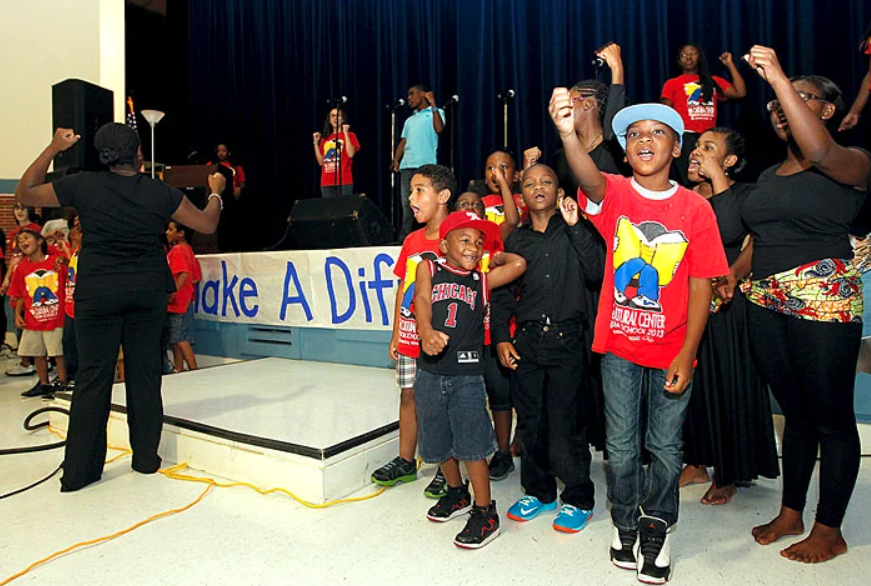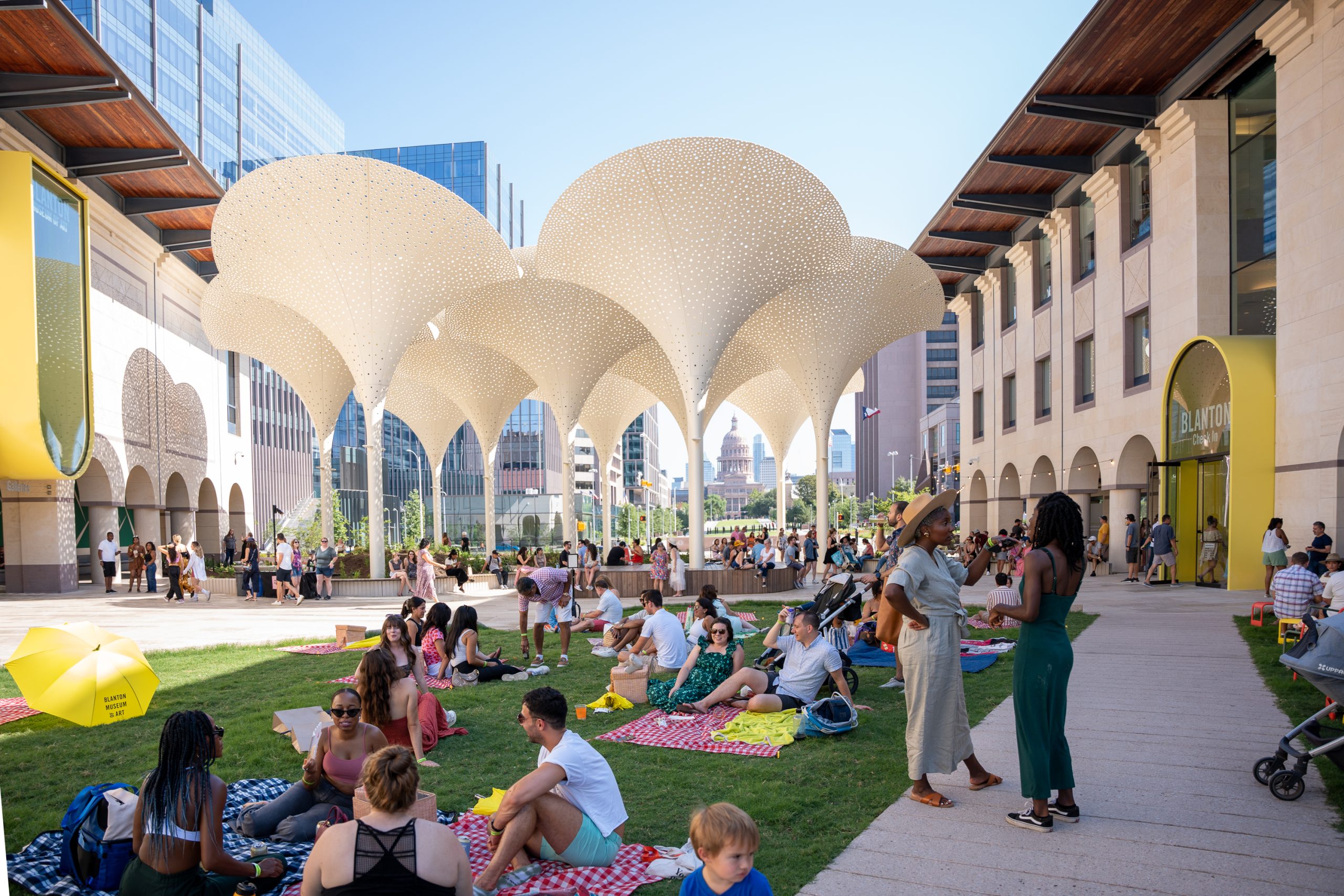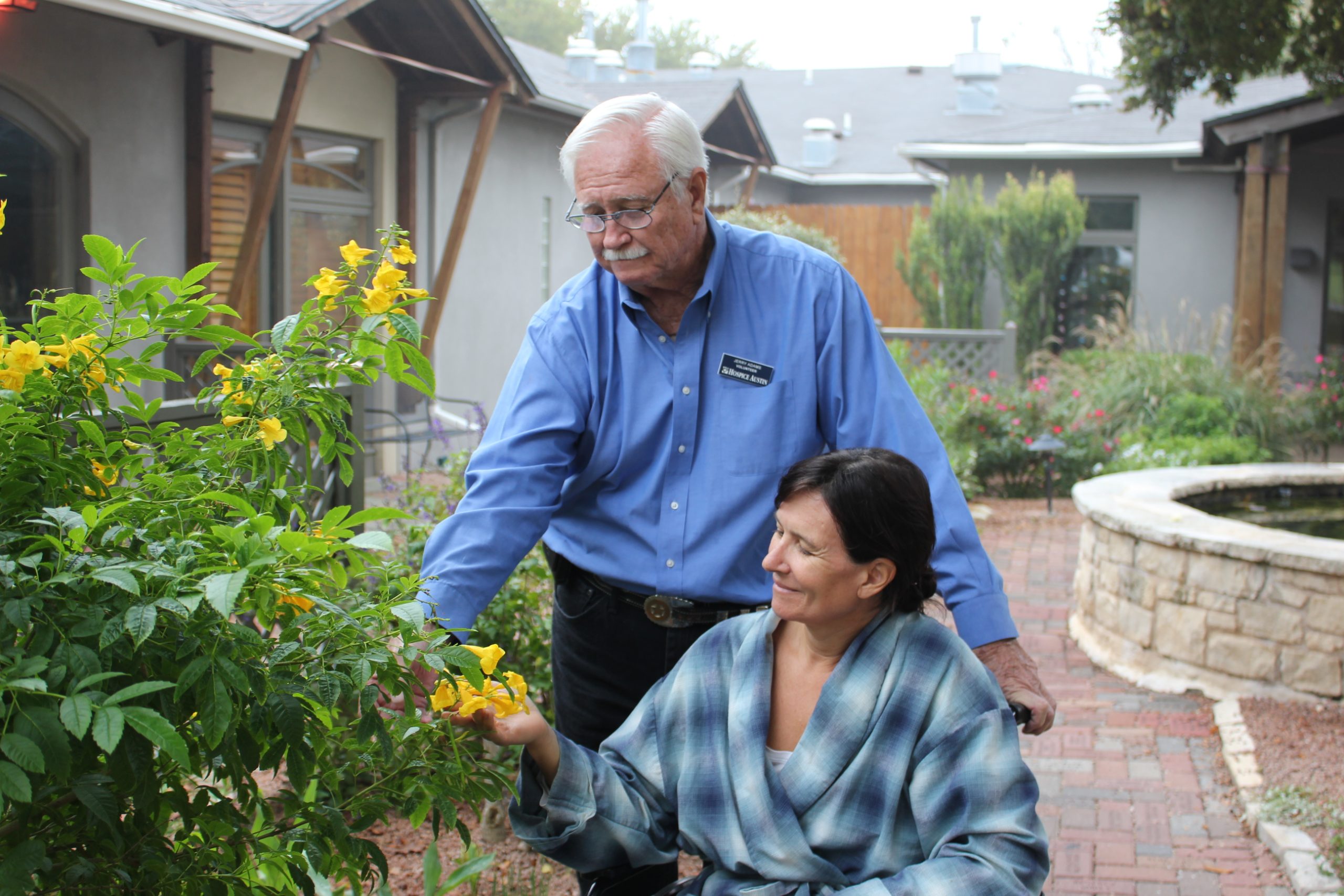
Moody Grant Recipient: Hospice Austin
What is the significance of Hospice Austin’s Christopher House and how has your organization evolved with changing needs in your community?
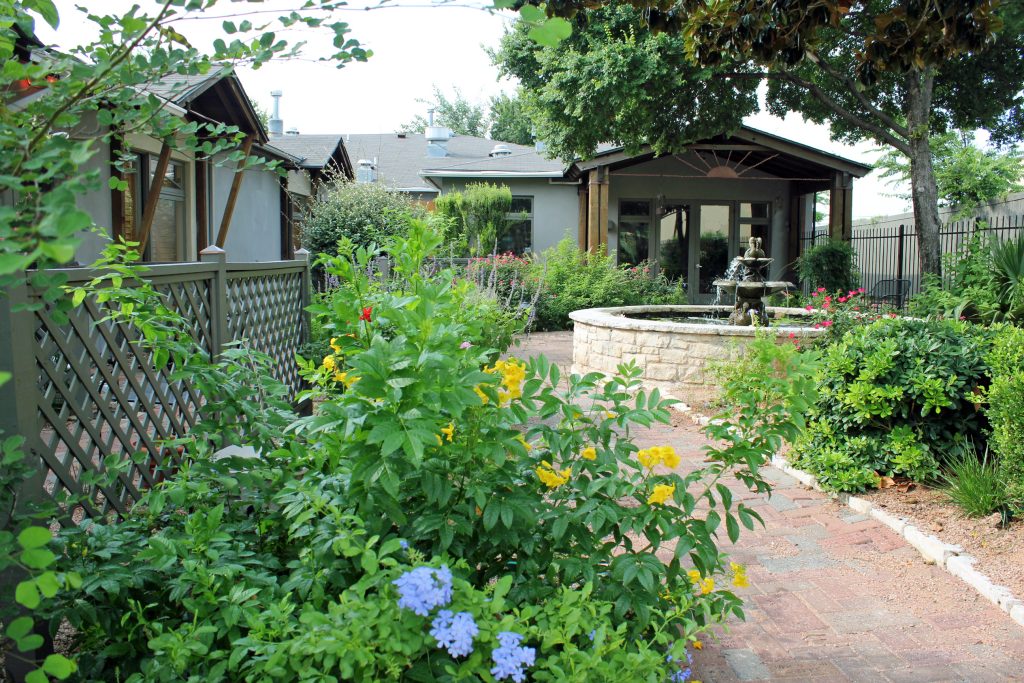
A serene oasis amidst life’s challenges – the Hospice Austin Christopher House’s courtyard offers a tranquil space for patients, families and caregivers to find solace and peace.
Although hospitals are not the ideal setting for end-of-life care, creating a Hospice Austin inpatient facility appeared to be an unattainable dream in the past. It was apparent that the community required such a facility, but the significant expense of constructing and maintaining it while remaining true to Hospice Austin’s non-profit mandate of providing care to all, regardless of their ability to pay, raised several questions.
However, in 1997, as the AIDS epidemic began to subside in the area, a small hospital specializing in AIDS treatment located on the east side of town was put up for sale. With the aid of numerous generous benefactors, including the Moody Foundation, Hospice Austin purchased and repurposed the facility. Inpatient hospice facilities are financially burdensome and not profitable, but the support of magnanimous donors like the Moody Foundation enables us to provide this valuable service to the community, irrespective of a patient’s insurance status.
Additional context from the Moody Foundation:
In 1992, the Moody Foundation made a $100,000 grant to the original Christopher House when it was established as an AIDS hospice. At the time, the building was just a dilapidated nursing home. With the grant, the space was revitalized to serve as an end-stage facility for AIDS patients. Within a few years of opening, AIDS became a manageable disease, so this service was no longer needed. The Foundation recognized the evolving needs and granted funding for the repurposed use of Christopher House with Hospice Austin.
Tell us about your relationship with the Moody Foundation.
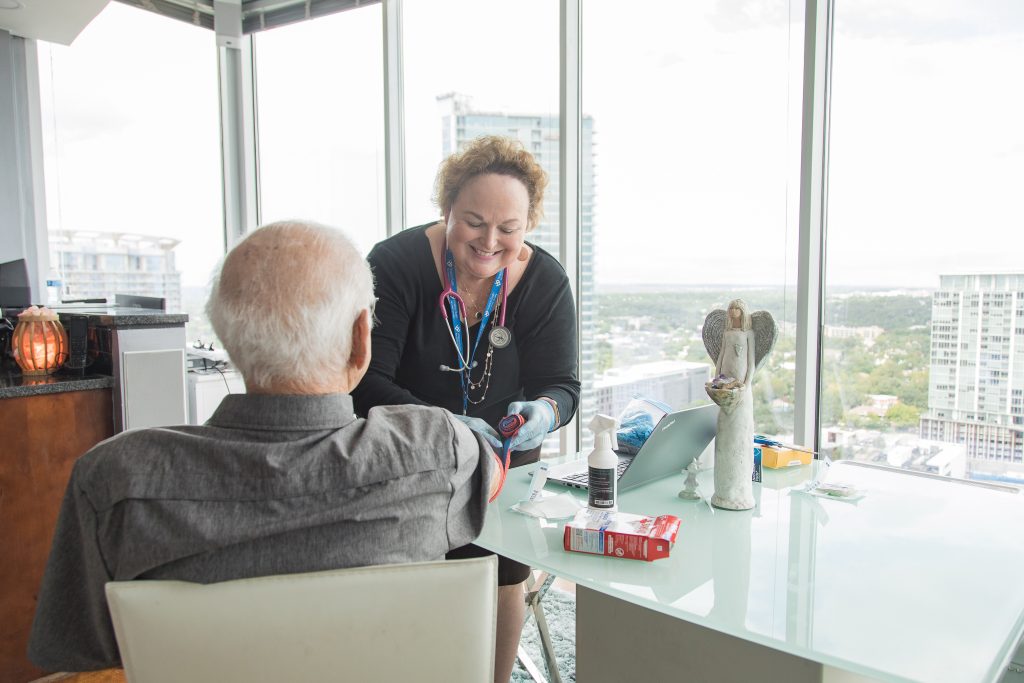
A listening ear and a warm heart – at Christopher House, our caring staff and volunteers are always here to offer support and companionship to patients.
The Moody Foundation provided capital funding 25 years ago which allowed us to open Hospice Austin’s Christopher House. Our beloved inpatient facility remains the only one of its kind in the Greater Austin area. Today, the Moody Foundation continues to help us improve the community’s access to comprehensive hospice and palliative care. The Foundation’s support for our Hospice Access for All Program (HAAP) ensures that patients without health insurance can get the care they need – in their place of residence, or at Hospice Austin’s Christopher House. In 2022, Hospice Austin provided more than $1.8 million in care to patients with no source of funding, a 49% increase from the year before.
The Moody Foundation’s funding is being used to provide accessible, high-quality hospice care and bereavement services to families who would otherwise go without the support they need. For example, since the Moody Foundation’s grant began this past summer, we have provided more than 3,900 days of care to 113 patients without health insurance. Before turning to Hospice Austin, one caregiver said, “We had been lost for weeks looking for care for our son.” A sibling who served through HAAP said, “Knowing my sister was surrounded by such kind staff gave me peace of mind.”
What are the ways in which Hospice Austin serves the community, and how has its mission and services grown following the repurposing of Christopher House?
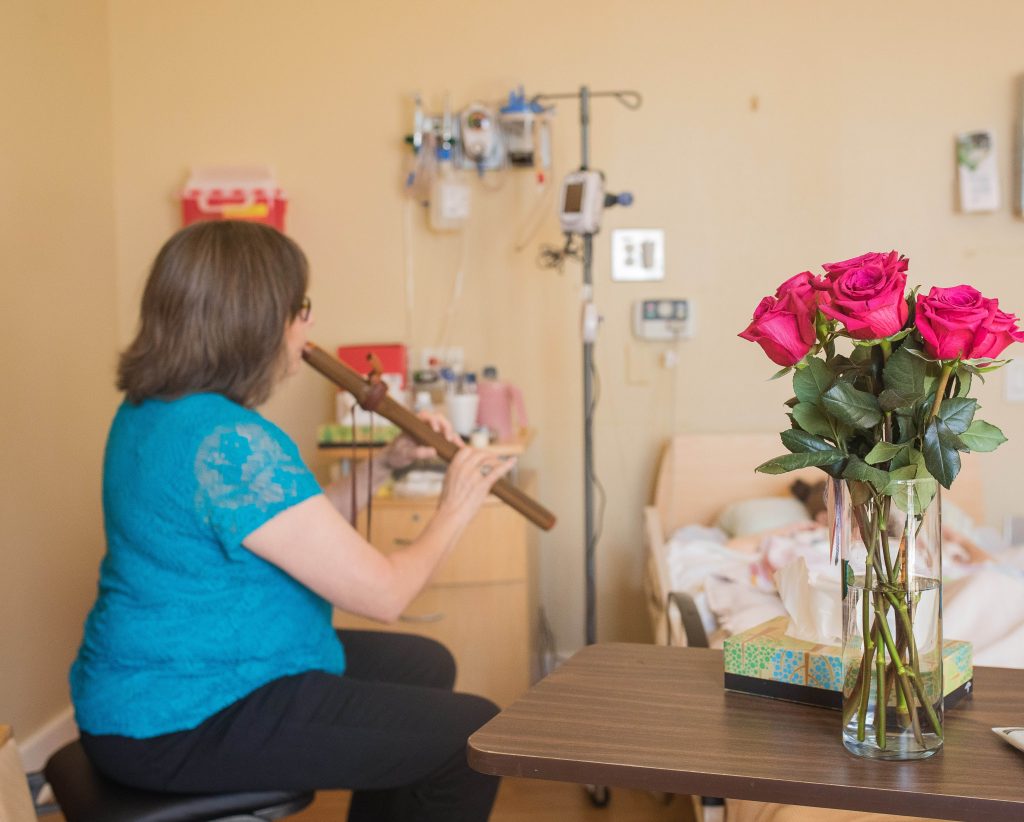
Musician playing the flute for a patient.
The end-of-life stage is characterized by numerous physical, emotional and spiritual challenges that can be difficult to navigate. Despite the best efforts of a dedicated team, a terminally ill patient’s symptoms may become uncontrollable while receiving care at home. To address this, Christopher House offers an alternative to hospitalization. Patient rooms feature wide-open doors that lead outside, inviting in fresh air, sunshine and the sweet fragrance of flowers lovingly tended to by volunteers. Patients’ loved ones and pets are welcome to stay with them, while musicians play soothing melodies in the hallway or at the bedside.
For the past 25 years, Christopher House, operated by Hospice Austin, has provided a peaceful, dignified, and serene environment for numerous patients and their families to experience the end of life in accordance with their wishes. One of our patients practiced Native American spirituality and wanted to make sure that when she was nearing death, her daughters turned her bed to the east, opened the door to the outside, and made giant sweeping motions with their arms from her bed to the door while saying “Whoooosh!” to usher her spirit out.
“When the time came, we did just like she wanted,” said the social worker from Hospice Austin’s Christopher House. “We were whooshing and one of her daughters was crying and suddenly she said, ‘You know, Mom probably just made this whole thing up.’ We all started laughing and I thought, how wonderful – to be dying and to hear laughing and whooshing.”
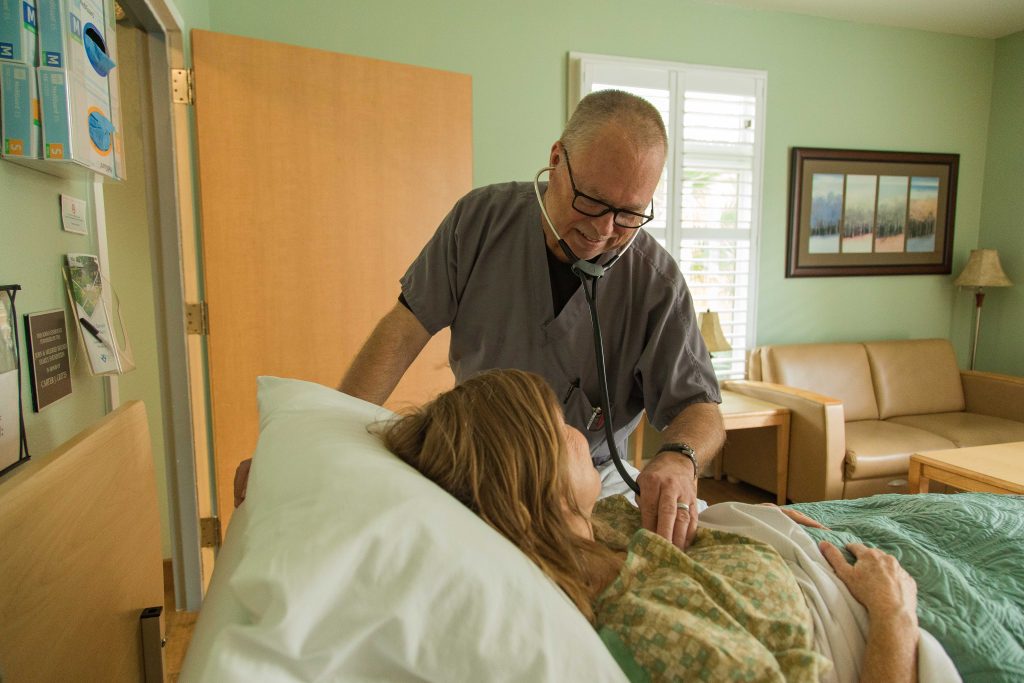
Hospice Austin’s Christopher House provides specialized end-of-life care that prioritizes compassion, comfort and dignity for patients and their families.
How many people does your organization serve annually/how many volunteers help provide support?
In 2022, Hospice Austin cared for 2,226 patients in Bastrop, Caldwell, Hays, Travis and Williamson counties, which resulted in over 134,000 days of care. Patients are served by an interdisciplinary team which includes a doctor, nurse, nurses’ aide, social worker, chaplain and volunteer. Volunteers bring companionship to patients and families that often feel isolated from society. Hospice Austin is fortunate to have more than 350 volunteers.
How do you measure the positive impact from the care you offer?
We employ various methods to evaluate our performance at Hospice Austin, such as reviewing questionnaire responses and ratings submitted by the family members of patients who have passed. We also monitor our census and the length of time patients stay under our care. In addition, we undergo continuous evaluation and accreditation by CHAP to ensure we maintain the highest standards of hospice care. Lastly, we track the quantity of care we provide to under- or uninsured patients who lack funding. Many nonprofit hospices place a limit on the amount of unfunded care they provide; however, at Hospice Austin, we take pride in never restricting such care.
